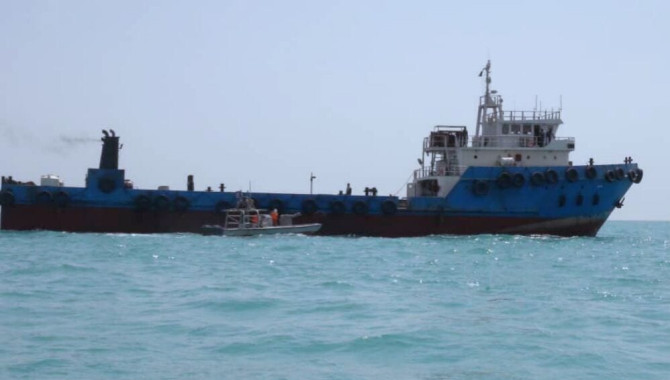
The Strait of Hormuz, a narrow waterway in the Middle East that marks the most sensitive transportation choke point for global oil supplies, was back in focus Friday after a U.S. airstrike killed a top Iranian military commander and heightened fears of a confrontation between the two countries.
A U.S. airstrike at Baghdad’s airport killed Qassem Soleimani, leader of the foreign wing of Iran’s Islamic Revolutionary Guard Corps. The Pentagon said President Donald Trump ordered the strike in a defensive action, alleging that Soleimani had planned to direct attacks on U.S. diplomats and service members in the region. Iran’s supreme leader, Ayatollah Ali Khamenei, declared three days of mourning for Soleimani’s death and said that a “hard revenge awaits criminals.”
Oil prices jumped, with West Texas Intermediate crude CLG20, +3.04% , the U.S. benchmark, rising to an eight-month high, and Brent crude BRNH20, +0.15% , the global benchmark, trading at its highest level since September when an attack on Saudi Arabia’s oil infrastructure, widely blamed on Iran, temporarily knocked half of the country’s output offline.
Global stocks sold off, with the Dow Jones Industrial Average DJIA, -0.81% dropping more than 300 points in early action. The Dow remained off by around 210 points, or 0.7%, at midday, while the and S&P 500 SPX, -0.71% lost 0.6%.
Iran is widely expected to retaliate, and analysts see the potential for renewed attacks on the waterway off of the country’s southern coast. Attacks on ships around the strait last year caused temporary jumps in crude oil prices.
Here’s a look at the Strait of Hormuz and why it’s a key concern for oil traders:
Where is the Strait of Hormuz?
The Strait of Hormuz is a narrow waterway that links the Persian Gulf with the Gulf of Oman and the Arabian Sea.
At its narrowest point, the waterway is only 21 miles wide, and the width of the shipping lane in either direction is just 2 miles, separated by a two-mile buffer zone.
Why is it important?
Oil tankers carrying crude from ports on the Persian Gulf must pass through the strait. Around 21 million barrels of oil a day flowed through it in 2018, equivalent to roughly a third of global seaborne oil trade and about 21% of global petroleum liquids consumption, the U.S. Energy Information Administration said in June.
Energy Information Administration
Can the strait be bypassed?
Not easily. Saudi Arabia and the United Arab Emirates operate the only pipelines capable of shipping crude outside the Persian Gulf and the additional pipeline capacity to circumvent the strait, the EIA said. At the end of 2018, the total available crude-oil pipeline capacity for both countries combined was estimated at 6.5 million barrels a day. With 2.7 million barrels a day moving through the pipelines that year, around 3.8 million barrels a day of unused capacity would have been available to bypass the strait, the EIA said (see table below).
EIA
Could Iran close the strait?
The presence of the U.S. Navy’s Bahrain-based Fifth Fleet has long cast doubt on Iran’s ability to close the waterway, analysts said. In addition, the U.S. in May announced it was sending an aircraft carrier group, bombers and a Patriot antimissile battery to counter what the Trump administration said were “clear indications” that Iran and its proxies were preparing to possibly attack U.S. forces in the region.
Source:MarketWatch
The opinions expressed herein are the author's and not necessarily those of The Xinde Marine News.
Please Contact Us at:
admin@xindemarine.com


 Ningbo Containerized Freight Index Weekly Commentar
Ningbo Containerized Freight Index Weekly Commentar  Ningbo Containerized Freight Index Weekly Commentar
Ningbo Containerized Freight Index Weekly Commentar  Ningbo Containerized Freight Index Weekly Commentar
Ningbo Containerized Freight Index Weekly Commentar  BIMCO Shipping Number of the Week: Bulker newbuildi
BIMCO Shipping Number of the Week: Bulker newbuildi  Ningbo Containerized Freight Index Weekly Commentar
Ningbo Containerized Freight Index Weekly Commentar  Ningbo Containerized Freight Index Weekly Commentar
Ningbo Containerized Freight Index Weekly Commentar